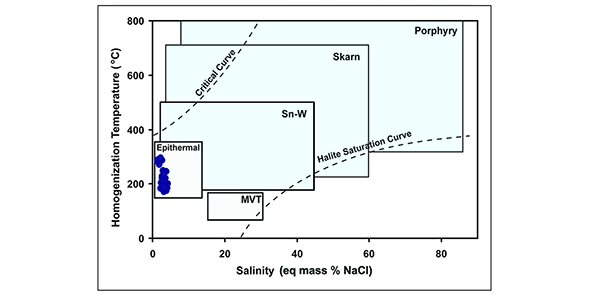Geochemical and fluids inclusion studies on gold-bearing quartz veins and the host andesitic rocks in the Miardan gold deposit, NW Iran
DOI:
https://doi.org/10.13133/2239-1002/16875Keywords:
, Miardan, vein-type gold, geochemistry, alteration, rare earth elements, Fluid inclusionAbstract
The Miardan gold deposit in northwest Iran is located 15 km west of the Bostanabad town. Mineralization occurs as quartz-sulfide veins (20 cm to 2 m thick) and silicified zones, hosted by Eocene andesitic rocks, which are severely altered, fractured and brecciated. These rocks mainly have calk-alkaline nature and active continental margin setting. Gold grade reaches >10 ppm in quartz-sulfide veins, while the altered and brecciated host rocks contain about 1.2 ppm Au. The TH(L-V) and salinity values measured on the 2-phase liquid-rich fluid inclusions within the quartz sulfide veins range between176 to 282°C and 0.65 to 2.6 wt.%NaClequiv., respectively, indicating the low salinities and moderate to low temperatures of ore-bearing fluids. These values correspond to epithermal mineralization by fluids of mainly meteoric origin upon cooling. The REE distribution pattern in chondrite and primitive mantle-normalized spider diagrams shows a distinct negative slope from LREEs towards HREEs, indicating the enrichment of LREEs compared to HREEs, which is similar to the typical pattern of many young and subduction-related volcanic rocks. This pattern also testifies to the presence of garnet as a residual phase within the source material and low degree of partial melting. According the geochemical criteria, it is conceived that fluids responsible for alteration and mineralization at Miardan are supergene fluids, which further confirms the microthermometric results.

Downloads
Published
Issue
Section
License
Copyright (c) 2022 fatemeh jahangiryar, samad alipour, vartan simmonds, alexander tvalchrelidzeh

This work is licensed under a Creative Commons Attribution 4.0 International License.

